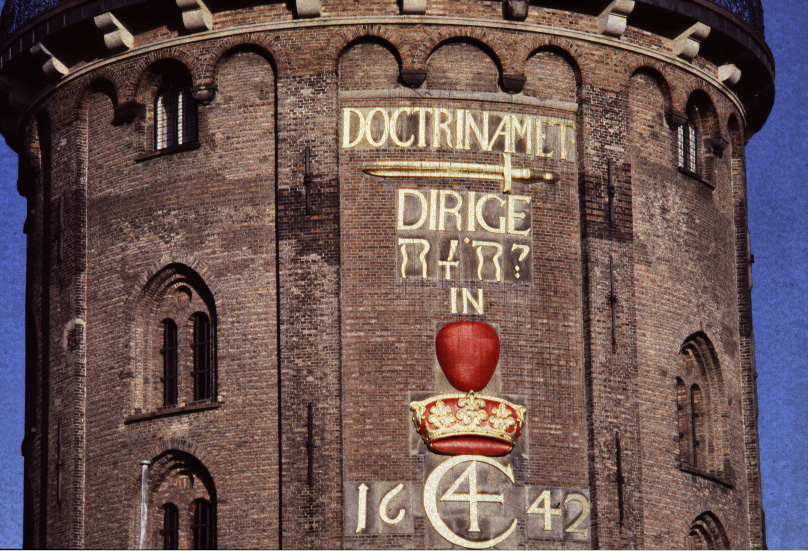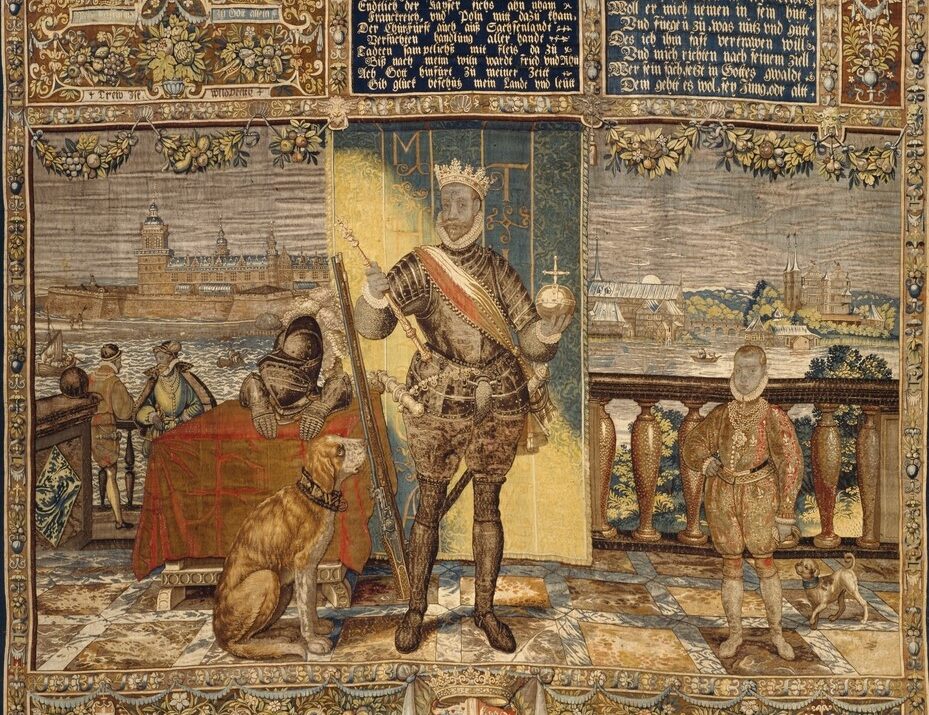This website uses cookies so that we can provide you with the best user experience possible. Cookie information is stored in your browser and performs functions such as recognising you when you return to our website and helping our team to understand which sections of the website you find most interesting and useful.
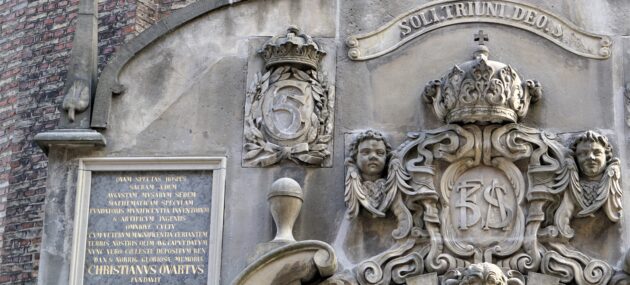
Gateway to the Round Tower
A tower is like a story: it has a beginning, a middle and an end. When it comes to the Round Tower, the middle is the Spiral Ramp and the end is the platform with its Observatory on top of the tower. These two parts of the tower have attracted most of the attention throughout the tower’s history. The Round Tower’s beginning, its entrance with the gateway to the tower, has received less notice.
“The number three can also refer to the three university functions that the edifice originally housed”
The gateway of the tower is, however, too interesting to simply be brushed aside as something one passes in order to reach something else. The gateway is the beginning, also in a more figurative sense. It contains nothing less than the Round Tower’s birth certificate, generously spiced with traces of changing kings, who have found it important to make their mark in this central location.
Old Age and Solidity
Peculiarly enough, the monarch who is least visible is none other than King Christian IV (1577-1648) who built the Round Tower. The gate arch, which is composed of a number of ashlars, most likely originates from his time. It can more or less be assigned to one of the lesser-known orders of columns, the so-called Tuscan order, which was probably not only chosen because of its appearance, but also the conceptions attached to it during the Renaissance.
The Tuscan column was associated with such assets as age, godliness, strength and solidity. These exact qualities fitted a tower, which, as the base of the Observatory at the top, was meant to indicate a continuation or perhaps even a rebirth of ancient wisdom, but now in a Christian context. Or, as it has been phrased by the art historian Henrik Bramsen (1908-2002), who has delivered a comprehensive analysis of the Trinity Complex, which the Round Tower is part of, “One wanted to have a ‘Tuscan’ portal with everything that this entailed of religious and moral conceptions and which corresponded to the style of the tower and the entire complex”.
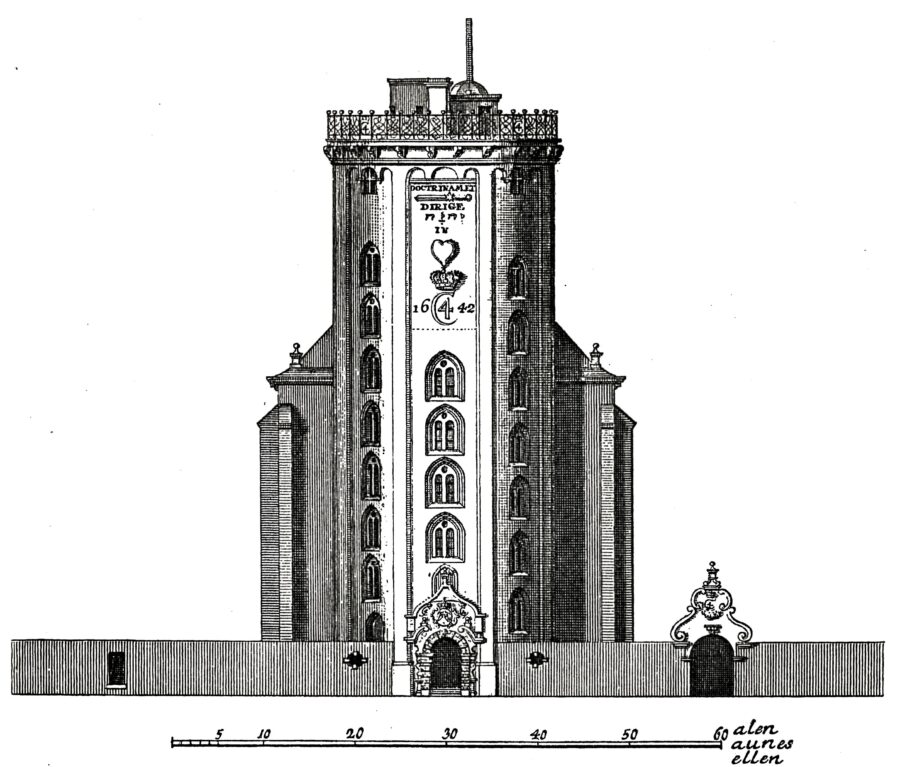
Three Kings
The reason why Christian IV did not place his monogram on the Round Tower’s portal is probably because it was included in his gilded rebus, which is placed a little further up on the tower’s façade. His successors, however, have not been stingy with placing monograms on the portal, which has gradually been enlarged in order to make room for all of them.
His son Frederik III (1609-70) thus placed his own and Queen Sophie Amalie’s (1628-85) monograms just above the gate arch in a so-called cartouche, that is a marked inscription area surrounded by ornaments. A little further up, the succeeding king, Christian V (1646-99), placed his own and Queen Charlotte Amalie’s (1650-1714) monograms free-floatingly.
The monograms are surrounded by a keel-shaped frame, which appears slightly skewed in relation to the Round Tower. The skewness is caused by the fact that the portal originally was part the wall that once separated the cemetery around the Trinity Church from the street of Købmagergade, the course of which the wall followed.
Three University Functions
The keel-shaped framing also encloses several other elements that have been added during the 17th century, among these a band that winds itself symmetrically between Christian V’s and his Queen’s monograms. It carries the text “SOLI.TRIUNI.DEO.S[acratum]”, meaning “Dedicated to the one triune God”. The band can thus be seen as a slightly late heading for the entire Trinity Complex.
The complex is named after the three elements comprising the Trinity but the number three can also refer to the three university functions that the edifice originally housed. On one of the two inscription tablets, which are also part of the portal, the functions are termed as “a sanctuary,/ an august seat of the Muses,/ and an astronomical observatory”. The words refer to the Trinity Church, which was initially the student’s church, the University Library on the floor above the church and the Observatory at the top of the Round Tower.
The Only Remaining Source
Art historians have not been in favour of the portal in its entirety, which among other things has been called “scrappy”. But the tablets, in particular, have received some harsh words along the way. “The most unfortunate part”, the art historian Frederik Weilbach (1863-1937) thus writes, “is the two inscription tablets, which appear so unflatteringly sharp with their rectangular frames against the winding band of the cartouche and the other ornaments”.
“The inscription tablets are, however, some of the most interesting things about the portal”
The inscription tablets are, however, some of the most interesting things about the portal, both because of the history of the tablets and because of the Latin inscriptions per se. One tablet thus tells us that Christian IV “by his own hand laying the first stone / of this royal edifice/ on 7 July in the year 1637 of Jesus Christ”, which is the only remaining source telling us when the foundation stone ceremony took place.
However, Christian IV could hardly have laid the foundation stone himself, since he was staying in the town of Glückstadt in the Duchy of Holstein in July 1637. The inscription with this information was probably also not added until 20 years after the foundation stone was laid, most likely at the same time as the other tablet was inserted. The second table tells us that Frederik III completed and inaugurated the Trinity Complex in 1656. That, however, does also not entirely match the truth since the University Library was not inaugurated until the following year.
Aftermath of the Bombardment
We first hear about the tablets in the historian Peder Hansen Resen’s (1625-88) Inscriptiones Haffnienses (Copenhagen Inscriptions) from 1668, from 1668, where both inscriptions are quoted in their full length. The further fate of the tablets is not completely clear but apparently they have not been taken very good care of.
One of the tablets, thus, fell down and was partially destroyed in 1807, when a source states that “A new stone with inscription will be placed above the entrance to the tower and replace the one that has fallen down”. The account is from the month of May, which means that the accident has nothing to do with the British bombardment of Copenhagen in September that same year.
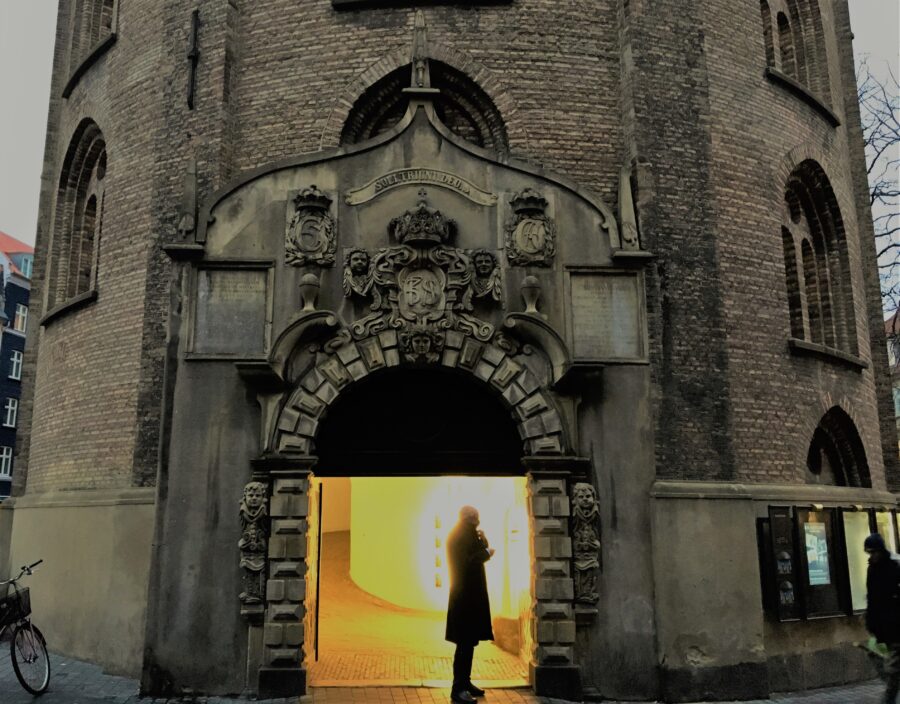
It is, however, probably the aftermath of the bombardment that caused the reinstallation of the tablet to drag on. Up until the anniversary of the Danish Lutheran Reformation in 1817, the governing body of the University of Copenhagen, being in charge of the Round Tower at that time, came with a proposal to renew the tablet that had fallen down and to restore the other one.
In order to keep the costs low, it was proposed to “shorten the inscriptions on the new one as well as on the extant old tablet” and to “make the tablet out of strong wood, so that when it is painted and the frame in which it will be inserted, like before, is made out of sandstone and well cemented, can last a long time in this place”.
Scarred by Time
The proposal with the wooden tablet was never brought to fruition and the inscriptions were allowed to keep their entirety which is also how they are cited in the work Hafnia hodierna (Copenhagen Today) by the architect Lauritz de Thurah (1706-59). Here, however, it is claimed that the tablets are placed reversed from what they are today, although this is probably a misunderstanding. It is also the complete inscriptions that have been transferred to the two new tablets with gilded letters that have been put up in the spring of 2021 as a much needed replacement of the old ones.
The oldest part of the portal, Christian IV’s gate arch, has possibly also been renewed. In an old newspaper clipping, which exists in the Round Tower’s collection, one can read that the sculptor Rasmus Secher Malthe (1829-93) made a new one in connection with the restoration of the Round Tower in 1868-69 because the old one was “greatly scarred by time and various damages”. The information cannot be fully verified, but even if it is true, it adds yet another layer of history to the old portal, which is already so rich in just that – history.
ædem sacram
Augustam Musarum Sedem
Mathematicam Speculam
Fundatoris munificentia, inventorum
& artificum ingenio
omnique cultu
cum veterum magnificentia certantem
Terris nostris olim Aug. Caput datum
nunc vero celeste depositum
Rex Dan. & Norrig. gloriosæ memoriæ
CHRISTIANUS QUARTUS
fundavit
et Dei ter Opt. Max. gloriæ consecravit
statuens sua manu primum regalis
hujus structuræ Lapidem
Anno J. Chr. MDCXXXVII VII Julii
Guest! You gaze upon
a sanctuary,
an august seat of the Muses,
and an astronomical observatory,
which, by the munificence of its founder,
the ability of its architects and artisans
and in every splendour
rivalling the magnificence of the ancients,
the erstwhile august ruler of our lands,
yet now in Heaven resting
King of Denmark and Norway
CHRISTIAN THE FOURTH
of blessed memory
has founded and dedicated
to the glory of God the so very Almighty,
by his own hand laying the first stone
of this royal edifice
on 7 July in the year 1637 of Jesus Christ.
gloriosissimi Domini
CHRISTIANI QUARTI
Fundatum est
Tergeminum Daniae Majestatis
Monumentum
Sacrosanctae Trinitatis Templum
Librarium Palatium
& admirandi operis Stellæburgum
Aug. Dan. & Norv. Rex
FRIDERICUS TERTIUS
perfecit
&, quod gloriosum felix faustumque
sit, pietati & publicae studiorum
utilitati dicavit
Anno J. Chr. MDCLVI
This building, which, by the pious prudence
of a king resting in the Heaven
of the most glorious Lord,
was founded by
CHRISTIAN THE FOURTH
as a threefold monument
of the Danish sovereign:
a sacrosanct church of the Trinity,
a palace of learning
and the excellent construction of Star Castle,
has the august King of Denmark and Norway
FREDERICK THE THIRD
completed and,
so that it shall be glorious, fortunate and prosperous,
devoted to piety and studies
for the benefit of the people
in the year 1656 of Jesus Christ.
